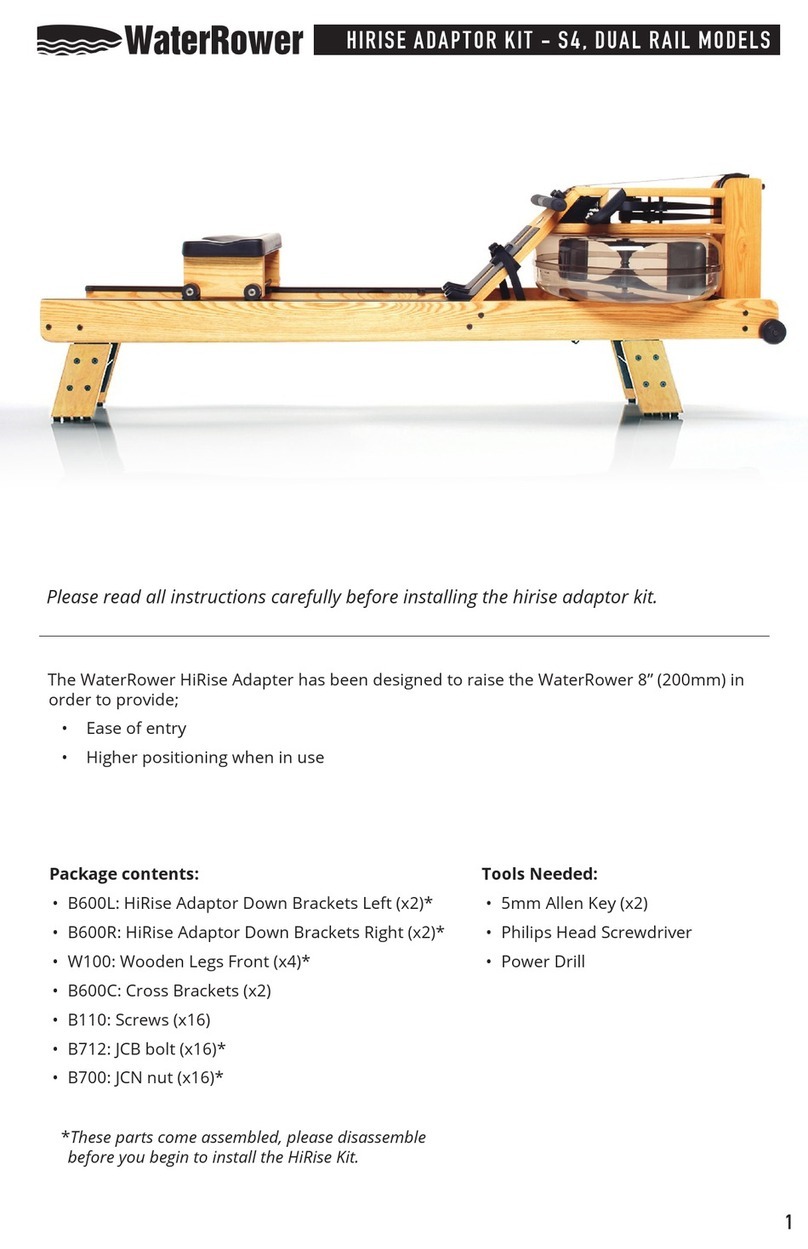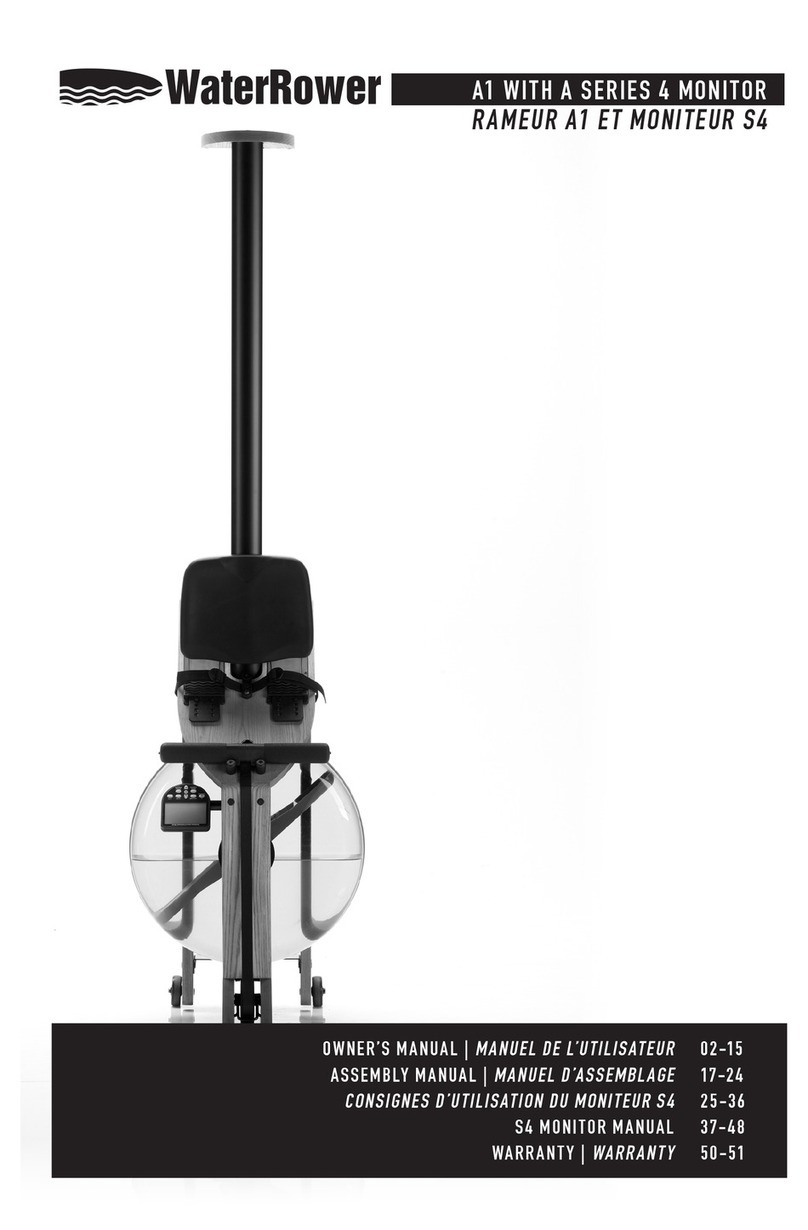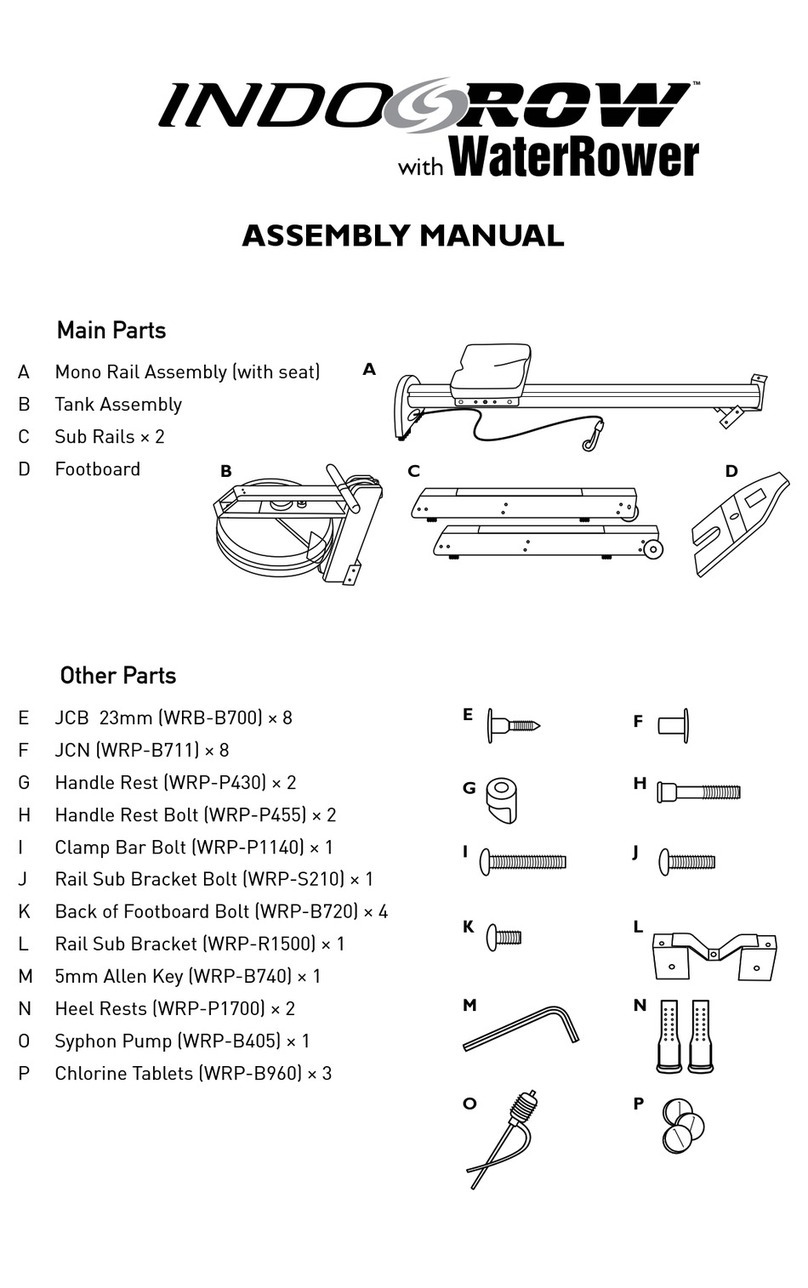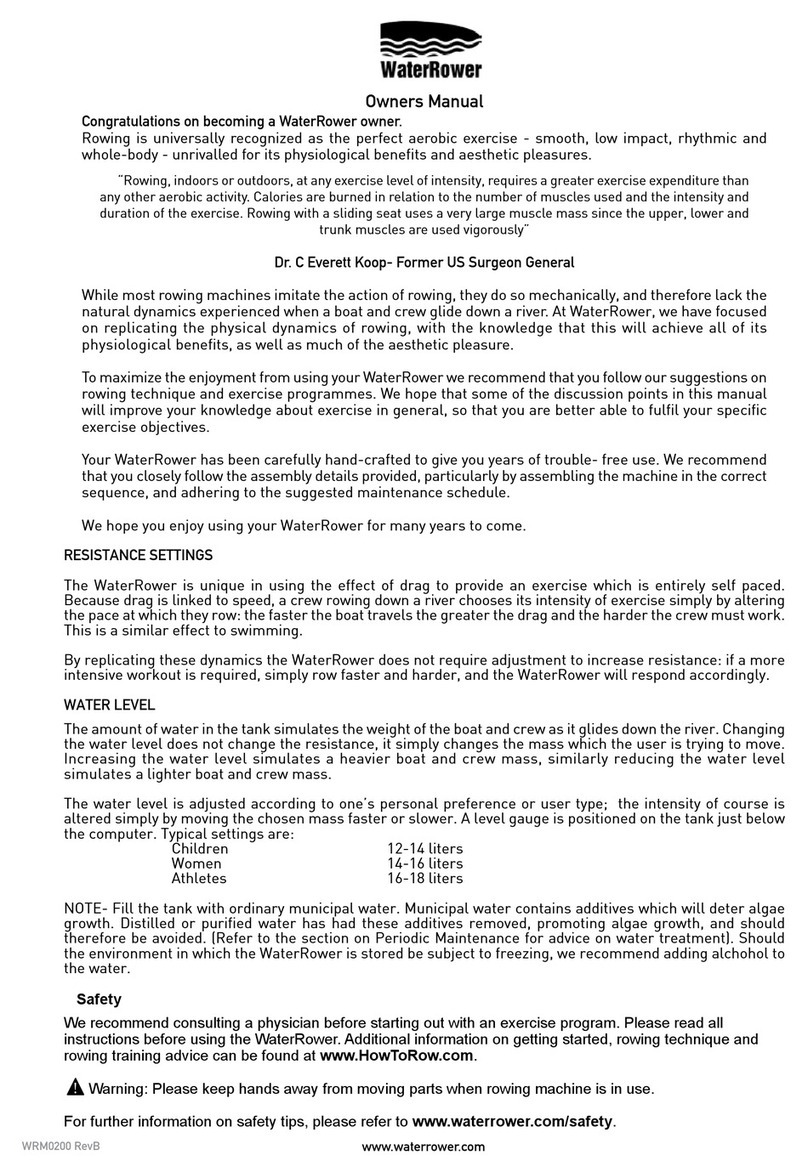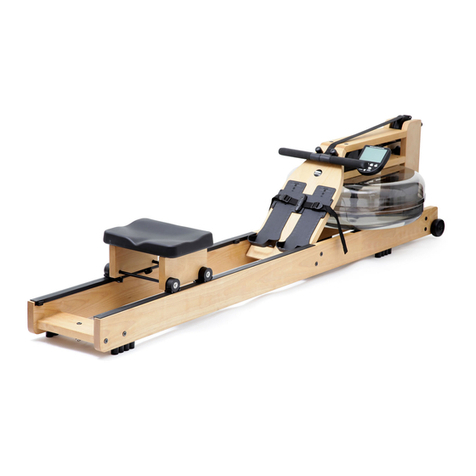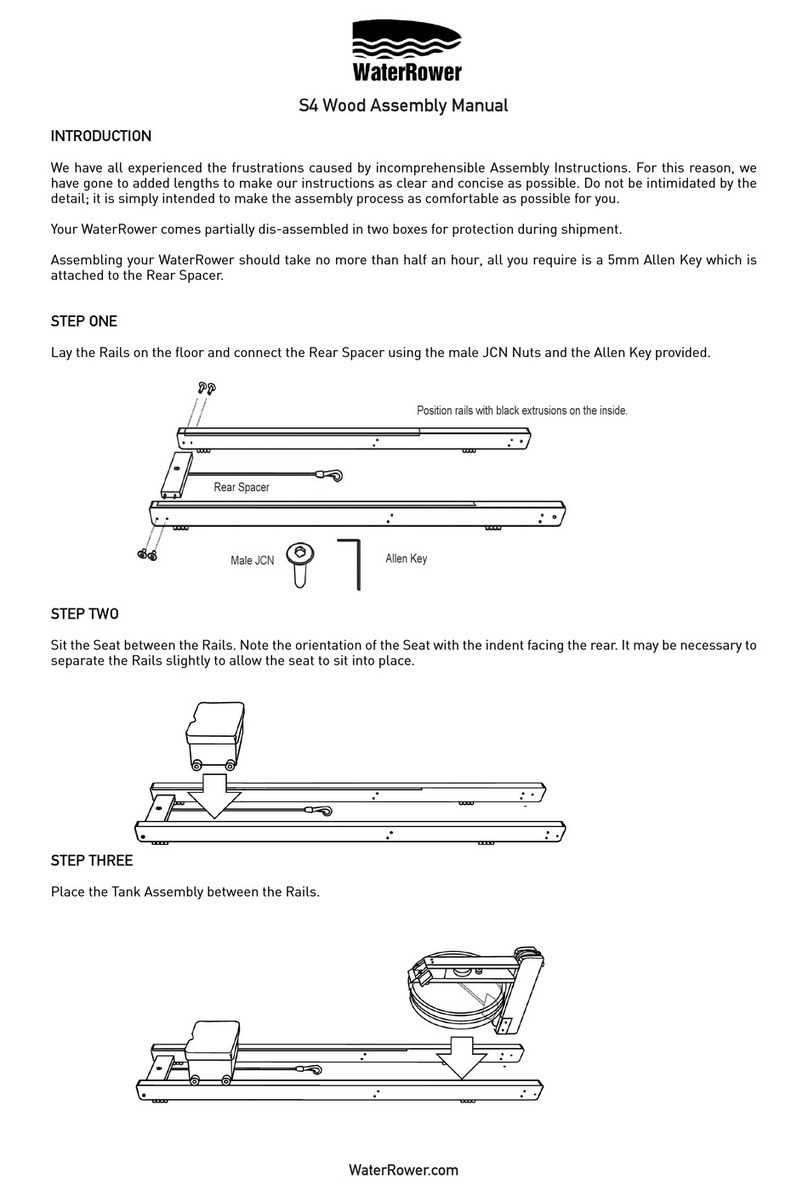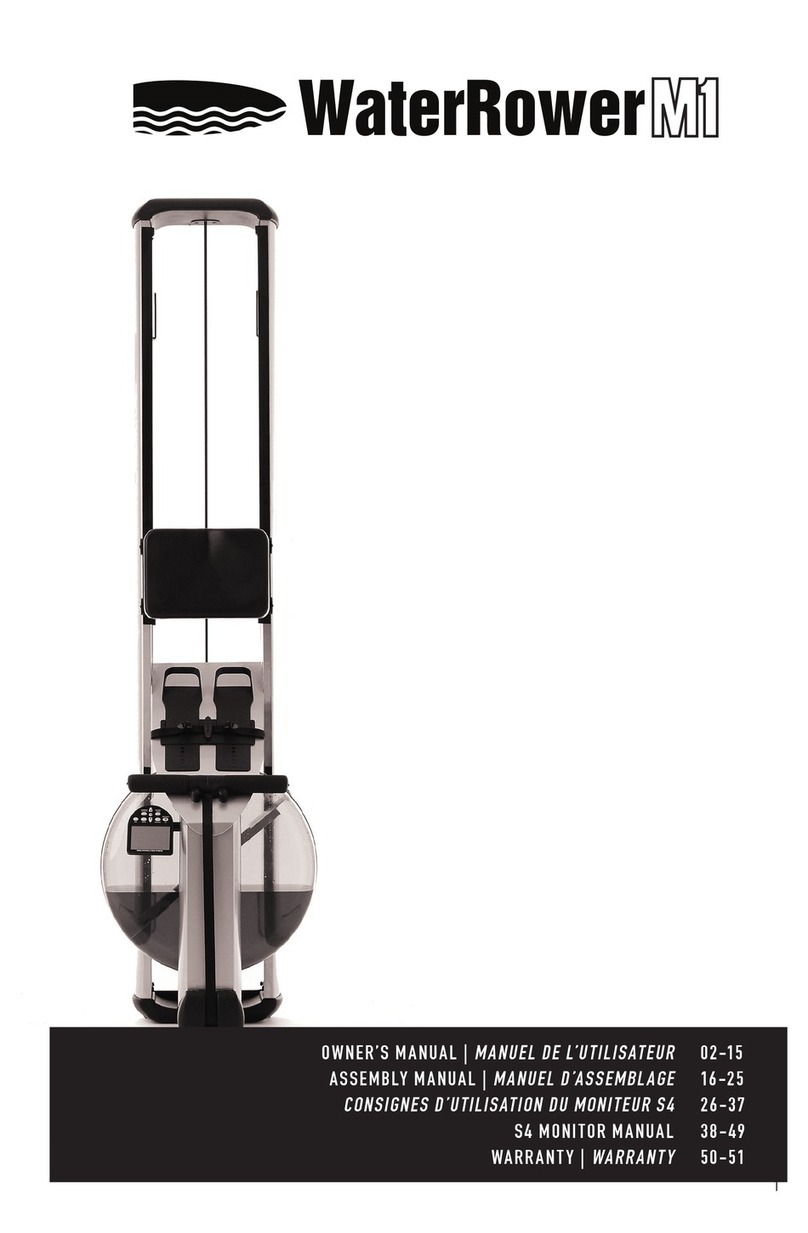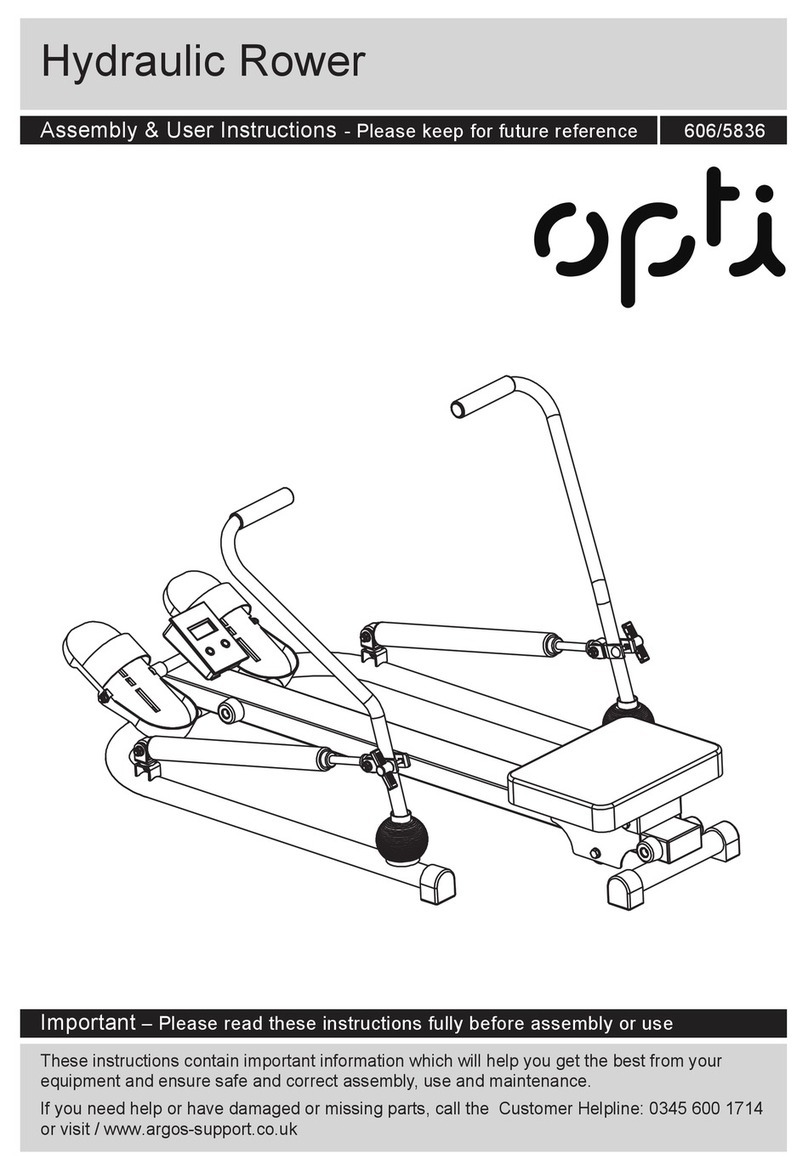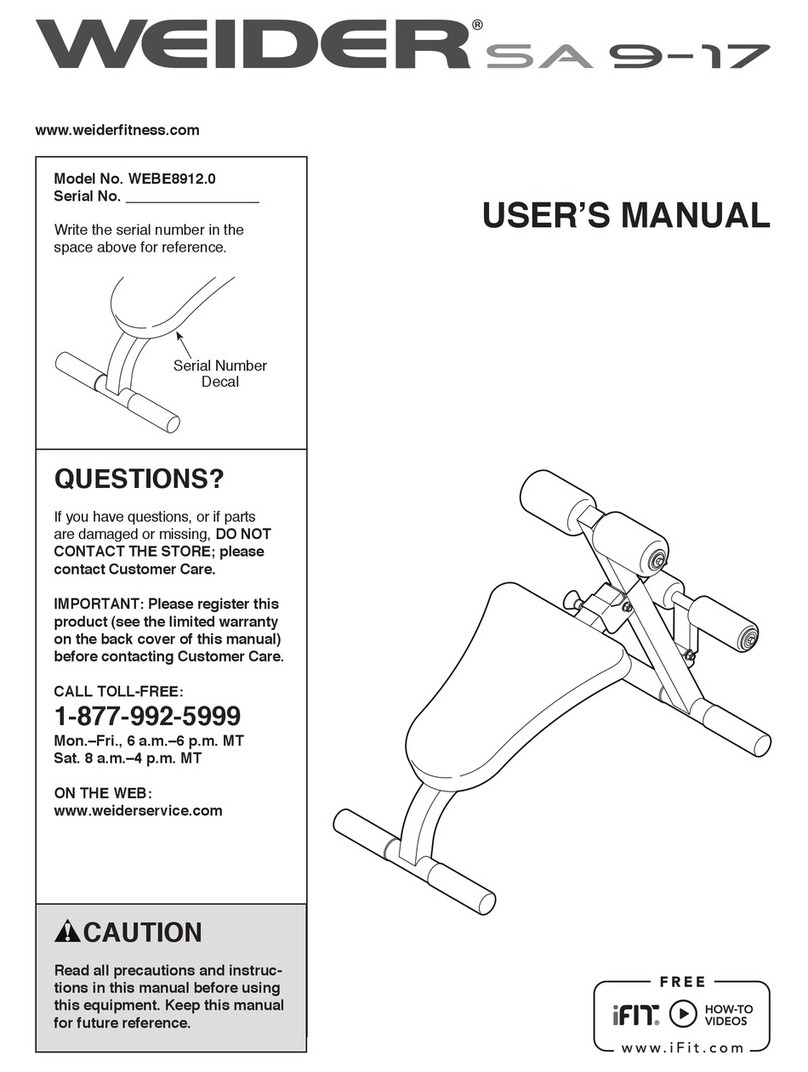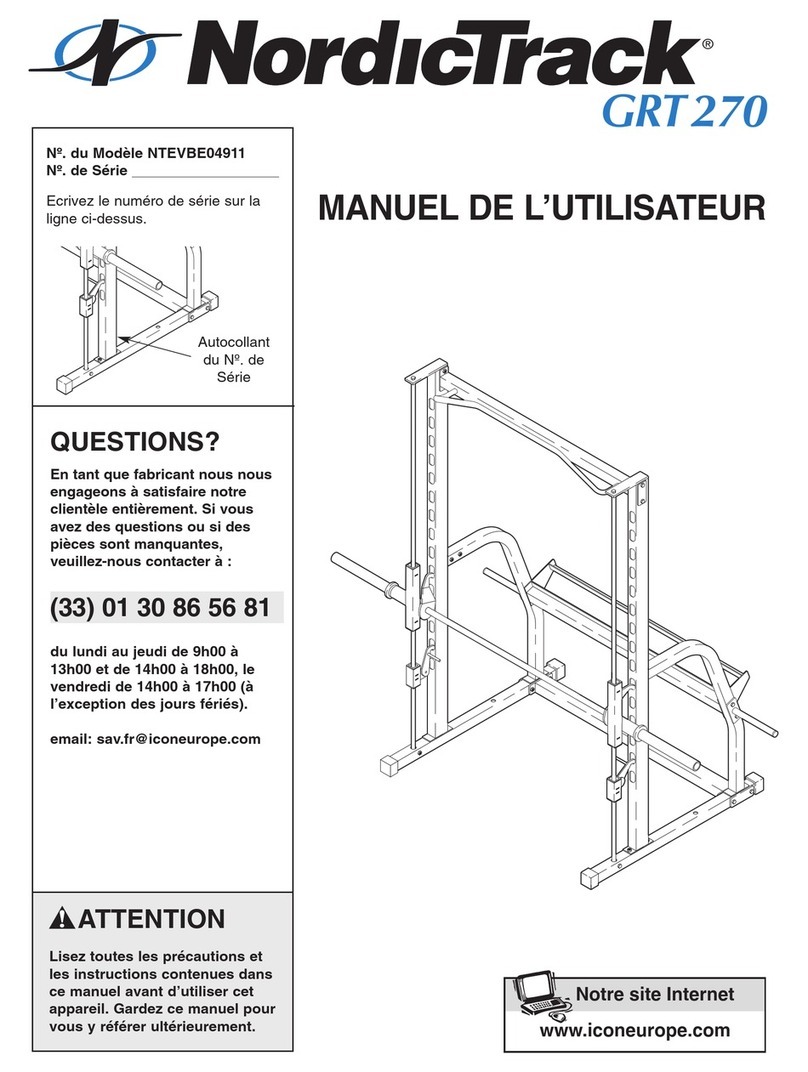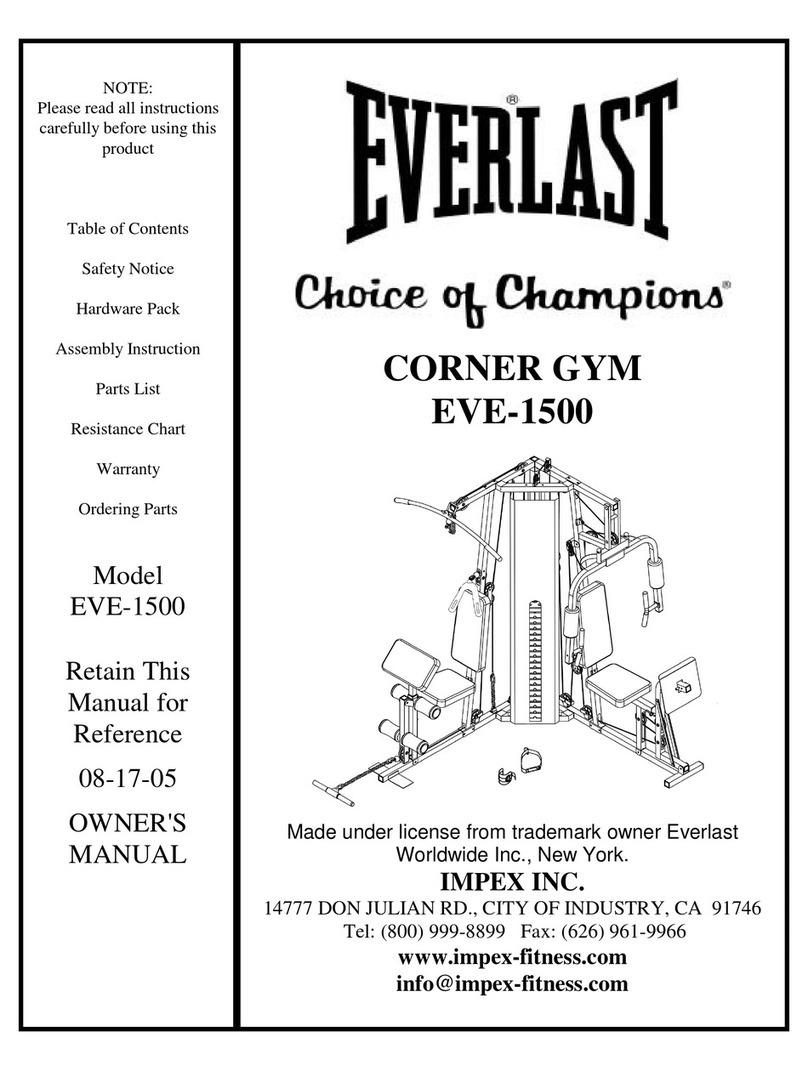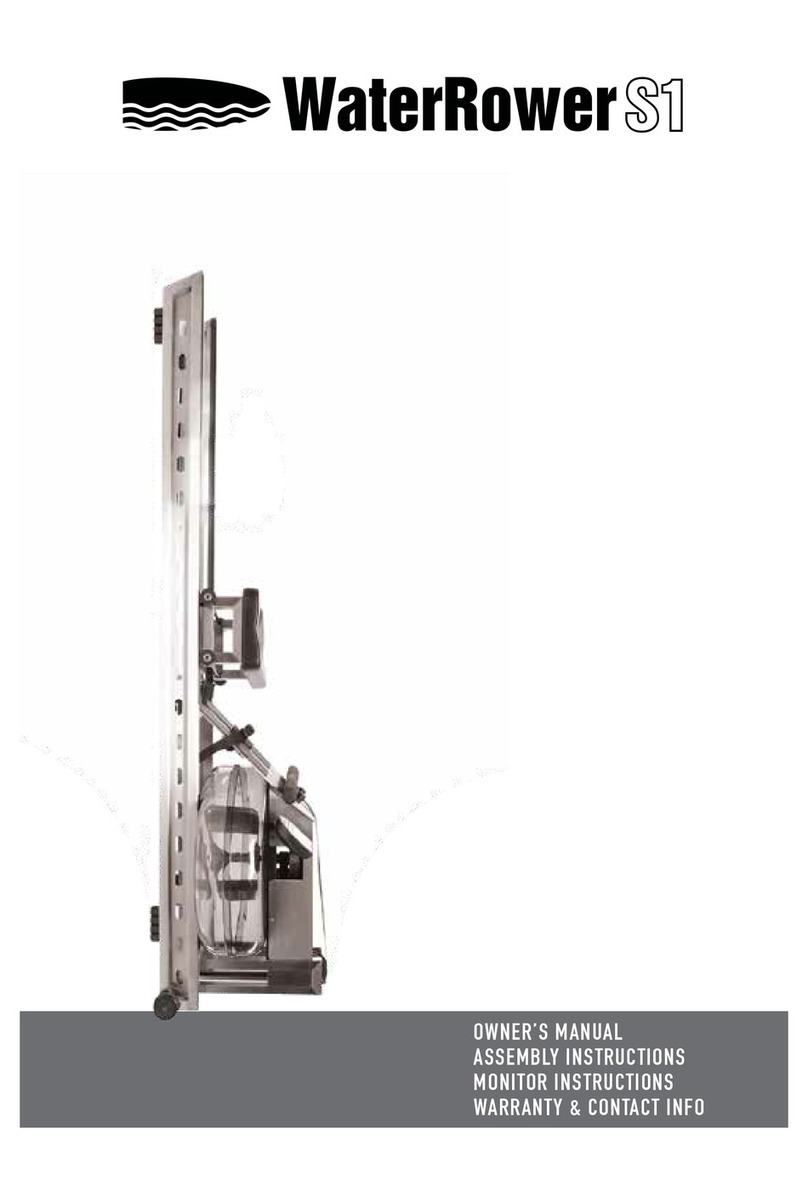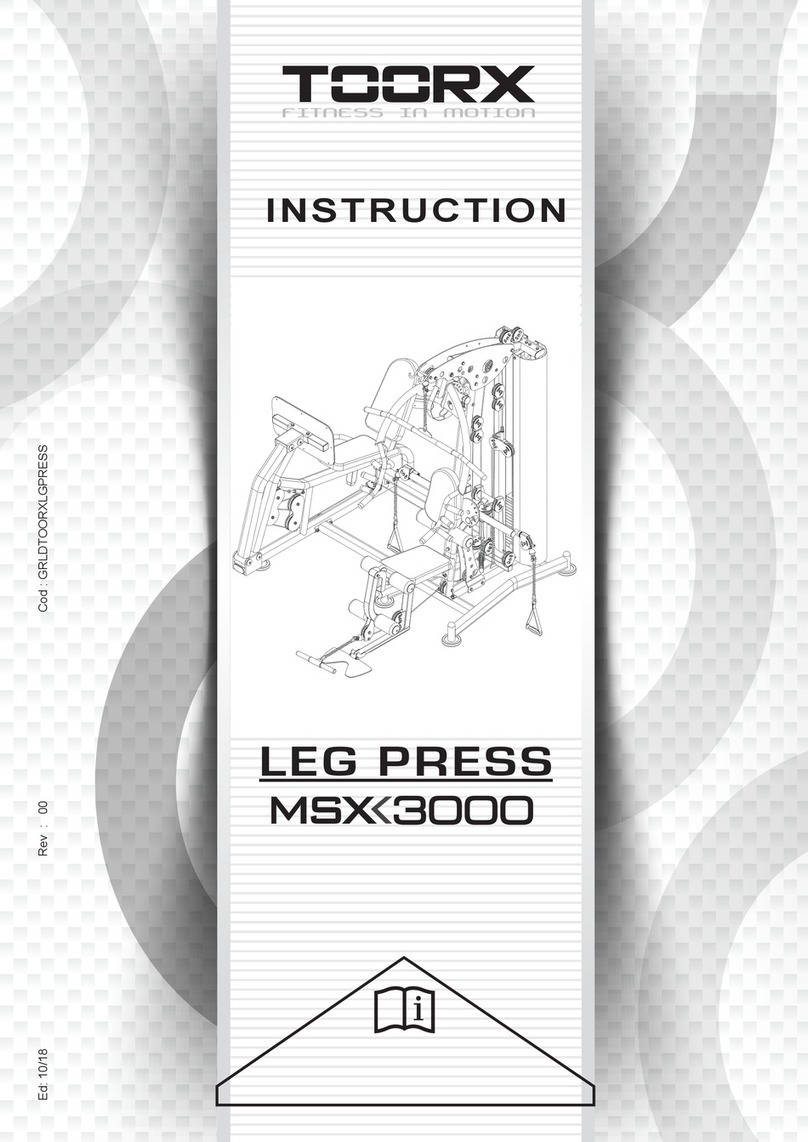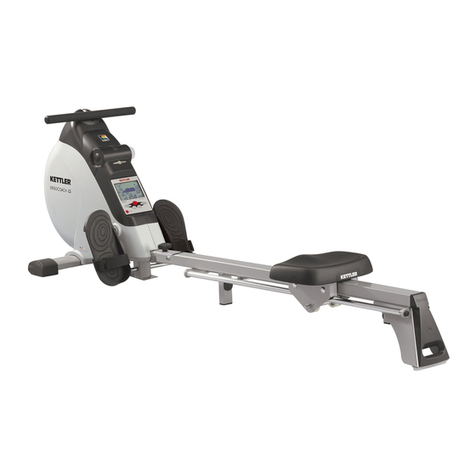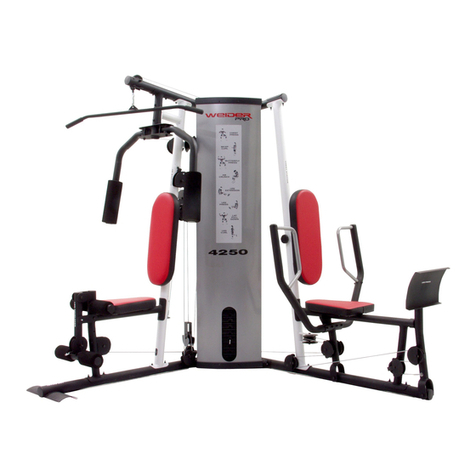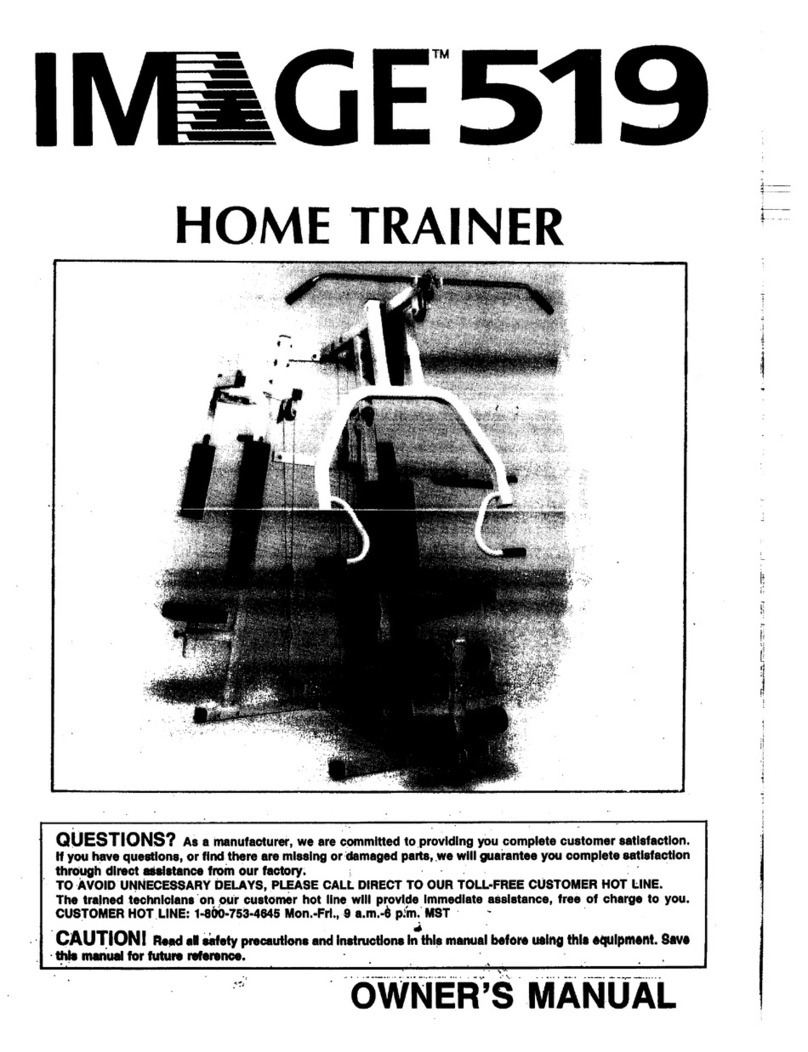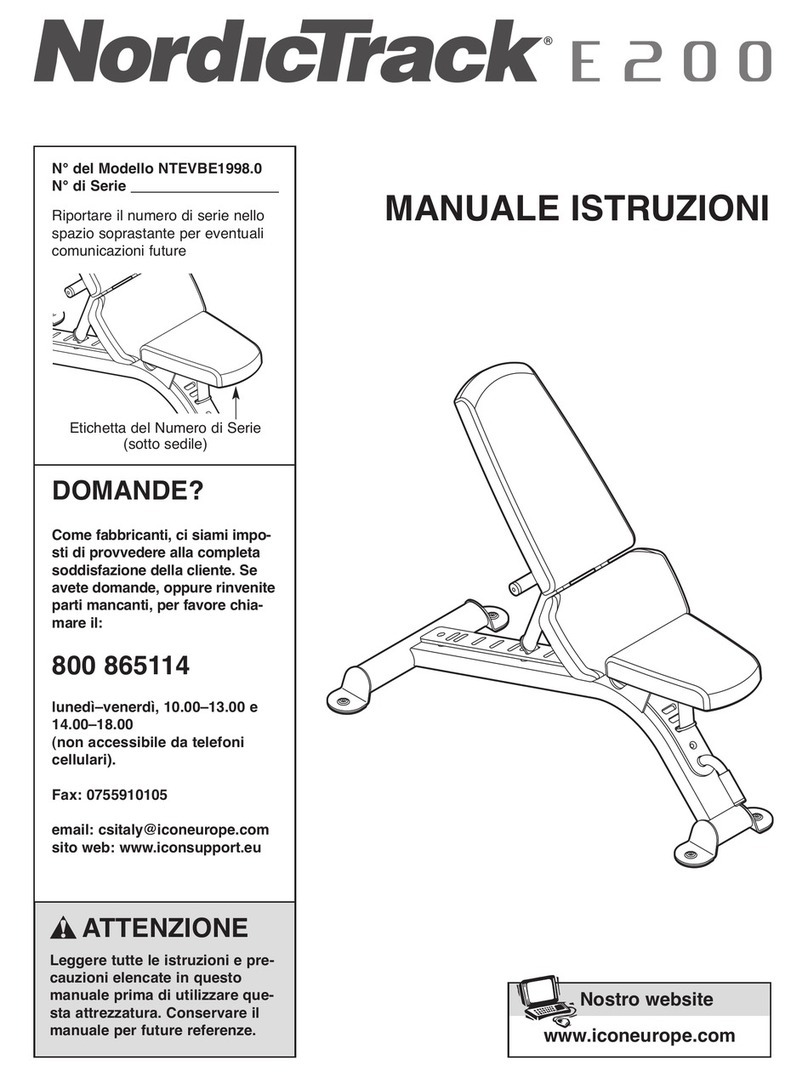05 06
MaInTaInIng The wOOD
The natural wood WaterRowers are finished with Danish Oil which gives
a deep penetrating finish to the Hardwood Frame. Other than occasional
dusting or polishing, the wood requires no maintenance.
sTOrage Of yOur waTerrOwer
Your WaterRower can be stored upright. Lift the Rear Leg end, pull the
WaterRower towards you and use the momentum to stand it in an upright
position. When storing the WaterRower, please ensure the seat is in
the forward position (close to the footboard). When stored upright the
WaterRower is stable and it only takes the space of a chair.
sTarTIng OuT wITh rOwIng
Rowing is an endurance sport which requires a high level of skill. This skill
is based on the co-ordination of the legs (which create the driving force of
the rowing action), torso and arms in propelling the boat across the water.
The rowing action is comprised of both fast (drive phase) and slow (recovery
phase) movements. Skill is also required in combining these movements
into a rhythm in order to create a smooth, flowing, unhurried rowing action.
The diagrams below show 3 basic movements of the rowing action.
CaTCh pOsITIOn
Sitting tall, arms straight reaching for-
ward, shoulders relaxed, head up, eyes
looking forward, legs compressed and
shins vertical.
DrIve phase
Drive back with the legs, arms hang off
the handle and only begin to bend once
handle is above the knees, torso is strong
with good posture and body angle opens
up slowly as you drive the legs.
release pOsITIOn
Legs straight, handle drawn to chest,
sitting back just past the vertical, torso
firm, shoulders relaxed, head up and eyes
looking forward.
Allow yourself the first few rowing sessions to practice the correct
positions and phases as well as the correct ratio and rhythm of the rowing
action. With regular rowing, the technique will become easier and you will
soon experience the physiological benefits of rowing.
Please visit www.HowToRow.com to learn more about the phases and
positions of the rowing technique.
yOur exerCIse prOgraM
Most of us recognize the benefit of exercise and the potential
improvements to our general health and well being. However few of us
fully understand the physiology of exercise and the best means of achieving
our specific exercise objectives.
In order to get the most out of any exercise program, it is essential to have
an understanding of what your exercise objectives are. These may include
reducing or maintaining weight, improving general strength, developing
bulging muscles, improving sporting competitiveness or simply avoiding
the health consequences of a modern sedentary lifestyle.
It is important to set a few different types of objectives.
These are divided into:
▪Immediate Objectives - weekly
▪Short Term Objectives - monthly
▪Long Term Objectives - yearly
Your long term objectives are your final objectives, to achieve these, you
need stepping stones which are the short term objectives and immediate
objectives. Objectives need to be:
▪Specific - set goals that you would like to achieve by certain dates
▪Realistic - do not set a standard too high or motivation will be lost
▪Flexible - be prepared for set backs such as injuries and illness
Your personal exercise objectives will influence the intensity, duration,
frequency and type of exercise you do. Below are a few examples of
different exercise objectives:
weIghT MaInTenanCe
At lower intensities our body uses a mixture of fat and carbohydrate as
its source of fuel. As the maximum aerobic output is approached, the
percentage of fat consumed as fuel reduces to zero. Also, as the duration
of exercise is increased the percentage of fat consumed tends to increase.
If your objective is weight maintenance, then it is necessary to burn as
much fat (as opposed to carbohydrate) as the source of fuel as possible.
This is best achieved at lower intensities and over longer durations. As
soon as the intensity is increased the aerobic process starts to burn more
carbohydrate and less fat. A low intensity (60 - 70% of the maximum heart
rate) is typically that at which you can hold a conversation: it is by no
means strenuous and is about that achieved by a brisk walk.
















